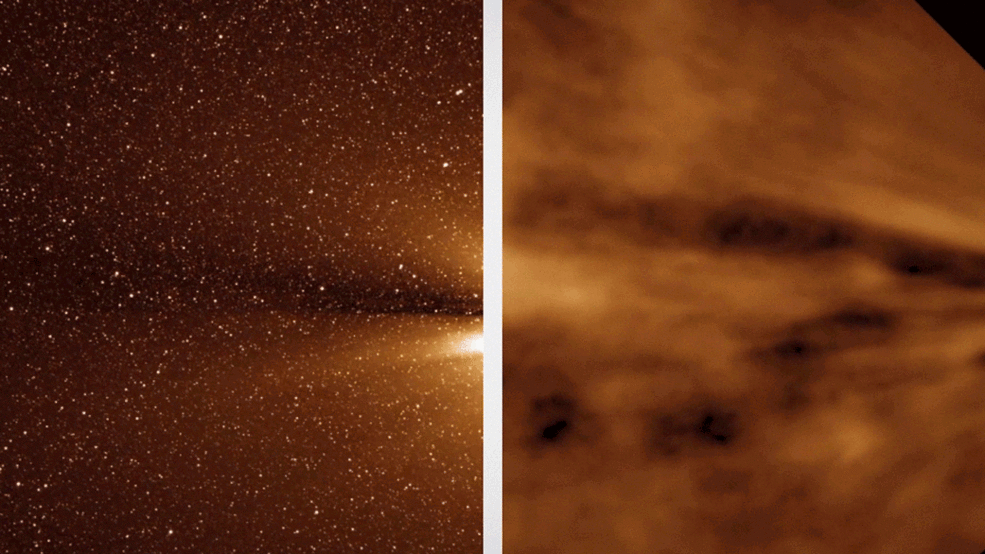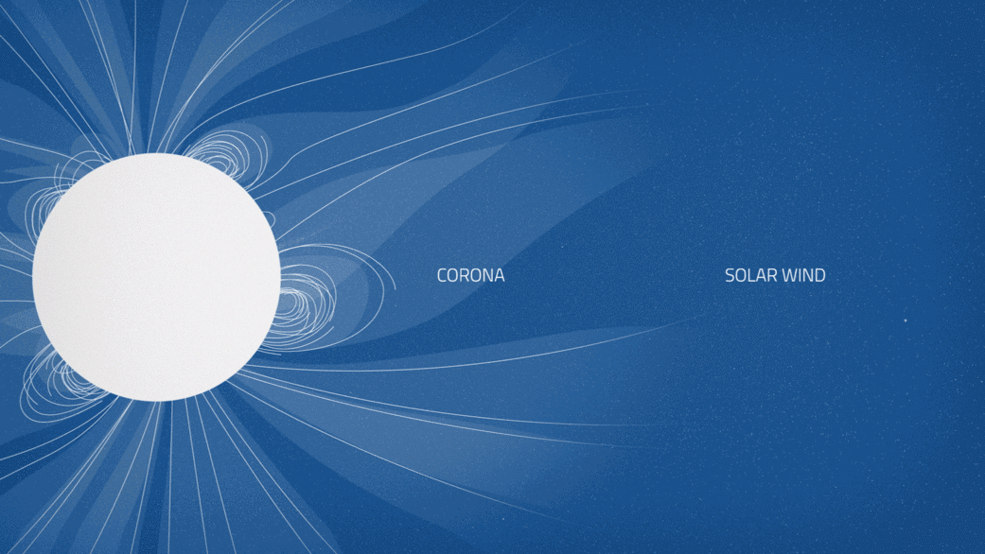How the moon got SUNBURN! Particles in the solar wind react with the lunar surface and its magnetic field to create dark and light swirls
- The sun’s charged particles interact with pockets of magnetic field on the moon
- These create ‘swirls’ on the lunar surface that deflect the harmful particles away
- White spots are ancient signs of ‘sun damage’ where there is no magnetic field
- Scientists hope studying these structures will help them protect astronauts
3
View
comments
White spots on the moon’s surface could signify areas of natural ‘sunscreen’ that protects the planet against damaging radiation from the sun.
Swirls on the moon are signs of localised magnetic fields that act as a barrier to reflect away the sun’s charged particles, protecting the surface from its harmful affects.
Areas that have not been shielded become ‘sunburnt’, appearing darker around the protected areas and thus creating a negative ‘print’ of the swirls on the lunar surface.
Nasa scientists hope that by studying these concentrated areas they will better protect their astronauts from the sun’s powerful rays on future explorations.
White ‘spots’ on the moon’s surface could have been created by the planet’s natural ‘sunscreen’ that protects the moon against the sun’s damaging radiation. Marks and swirls on the moon are signs of magnetic field pockets that can reflect the sun’s charged particles and shield its damaging effects, creating uneven patches of exposure
Unlike the Earth which is entirely surrounded by a magnetic field that protects all the living species, the moon has localised ‘spots’ of magnetic field.
John Keller of NASA’s Goddard Space Flight Center in Maryland that spotted the patterns, said:
‘These patterns, called ‘lunar swirls,’ appear almost painted on the surface of the moon.
-
‘Fire-breathing dragon’ is spotted in an incredible display…
Lack of sunspots could bring a ‘Space Age record’ for cold…
Space ROCKS: Expedition bags haul of ‘lost’ meteorites…
Elon Musk says his ‘Starship’ will first fly humans to the…
-
The ‘Lunar Library’ backing up all of humanity: Israeli…
Share this article
They are unique; we’ve only seen these features on the moon, and their origin has remained a mystery since their discovery.’
In the latest project, Nasa’s scientists have created computer models of how the magnetic shield interacts with the sun’s solar winds to create these swirls.
Nasa said: ‘The new models reveal that the magnetic field can create a strong electric field when the solar wind attempts to flow through. It is this brawny electric potential of many hundreds of Volts that could deflect and slow particles in the solar wind.
Marks and swirls on the moon are signs of localised magnetic fields that can reflect the sun’s charged particles and protect from its harmful affects. Unlike the Earth which is entirely surrounded by a magnetic field that protects all the living species, the moon has localised ‘spots’ of magnetic field
The sun releases a continuous flow of charged particles that produces a solar wind which washes over our solar system, creating a space called the ‘heliosphere’ that extends past Pluto.
Planets, moons and other bodies that have magnetic fields reflect these winds and protect themselves by doing so.
The flow of liquid metal in the Earth’s outer core as well as its rotation causes electric currents that create a strong magnetic field all over the planet.
The moon, however, doesn’t have either of these. Its fields are instead created by magnetised rocks near the lunar surface that create small magnetic ‘spots’ which can span from hundreds of meters to hundreds of miles.
Dr Andrew Poppe, a scientist at the Space Sciences Laboratory at the University of California at Berkeley who researches the Moon’s crustal magnetic fields using data from NASA’s ARTEMIS mission, said:
‘The magnetic fields in some regions [of the moon] are locally acting as this sunscreen.
Referring to the so called ‘sunspots’ on the moon, Dr Poppe added: ‘You know, sometimes you put on sunscreen and you miss this little bit and then you have a really bright red spot on your skin.
That’s in some ways an analogy of [the regions of the moon without magnetic protection] that are extra-exposed.
The leading hypothesis is that the magnetic fields are blocking some portion of the solar wind from reaching the surface.’
Understanding more about the moon’s natural protection mechanisms could help decide where astronauts land in Nasa’s next moon mission, even though the fields themselves won’t provide enough protection to humans
Scientists at Nasa made the proposals after looking at the reflection paths of the sun’s charged particles over the last five years.
Understanding more about the moon’s natural protection mechanisms could help decide where astronauts land in Nasa’s next moon mission, even though the fields themselves won’t provide enough protection to humans.
The scientists however say that studying the structure of these zones could help advance techniques that protect explorers from the sun’s harsh atmosphere.
HOW IS THE SOLAR WIND FORMED?
The sun and its atmosphere are made of plasma – a mix of positively and negatively charged particles which have separated at extremely high temperatures, that both carries and travels along magnetic field lines.
Material from the corona streams out into space, filling the solar system with the solar wind.
But scientists found that as the plasma travels further away from the sun, things change.
Views of the solar wind from NASA’s STEREO spacecraft (left) and after computer processing (right). Scientists used an algorithm to dim the appearance of bright stars and dust in images of the faint solar wind
The sun begins to lose magnetic control, forming the boundary that defines the outer corona – the very edge of the sun.
The breakup of the rays is similar to the way water shoots out from a squirt gun.
First, the water is a smooth and unified stream, but it eventually breaks up into droplets, then smaller drops and eventually a fine, misty spray.
A recent Nasa study captured the plasma at the same stage where a stream of water gradually disintegrates into droplets.
If charged particles from solar winds hit Earth’s magnectic field, this can cause problems for satellite and communication equipment.
Source: Read Full Article









